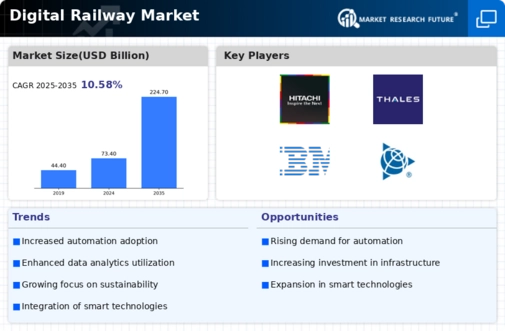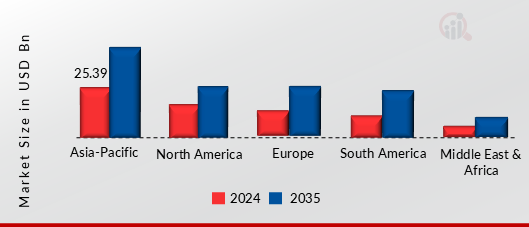Digital Railway Size
Digital Railway Market Growth Projections and Opportunities
The railway industry has taken the digital route and is undergoing a sea change that is affecting global rail dynamics. Digitalization in the rail sector has been boosted by technological advancements that are improving operations, safety, and general performance. The first one is advanced communication and signaling systems. Also known as Advanced Train Control Systems (ATCS), the technology uses digital platforms to enable real-time exchange of information between trains, infrastructure, and control centers thus enhancing operational control, reducing congestion, and promoting safety through better train management. This integration with Internet of Things (IoT) devices and sensors also aids in predictive maintenance since it enables operators to address possible issues before they escalate thereby minimizing disruptions and downtime.
Furthermore, Artificial Intelligence (AI) incorporation is transforming the world of Digital Railways. AI uses algorithms to analyze large data sets that help in optimizing train schedules, prediction of maintenance requirements and energy use efficiency among others. These optimizations aim at streamlining operations while contributing towards cost savings on a more sustainable rail infrastructure. By leveraging artificial Intelligence-based predictive analytics; railway companies could anticipate challenges and respond dynamically for an efficient passenger & freight transportation network.
The digitalisation of ticketing services a significant aspect in market dynamics in the digital railways sector. The norm now includes mobile applications, contactless payments systems and e-ticketing systems which have improved quality of service for passengers overall experience. The development also means that people can buy tickets more easily but track them alongside live timings or delays plus have any alternative way just in case things don’t go as planned .For instance nowadays travelers are seeking seamless user-friendly experiences mainly because it saves time on their part.
Additionally, the digital railway market is experiencing increased implementation and development of Connected Autonomous Trains (CAT). CATs deploy sensor systems based on machine learning along with other automation technologies to be operated with little human interference. These include onboard connectivity through IoT enabled components such as sensors which have made this possible. It is expected that CAT systems can improve safety by reducing human error, enhance operational efficiencies and provide better control over train movements. This paradigm shift towards autonomous trains is expected to revolutionize the rail industry’s dependability and performance.
Cybersecurity is becoming a prominent factor that determines the dynamics of digital railway market. With increased interconnectivity and digitization of railway systems, vulnerability to cyber-attacks grows. To achieve this, digital infrastructures, information elements and communication networks must be secured in order to maintain integrity of railway operations. Essentially, encryption, intrusion detection systems as well as regular security audits are being adopted in various digital railways’ infrastructure framework with an aim of mitigating possible cyber-attacks.









Leave a Comment